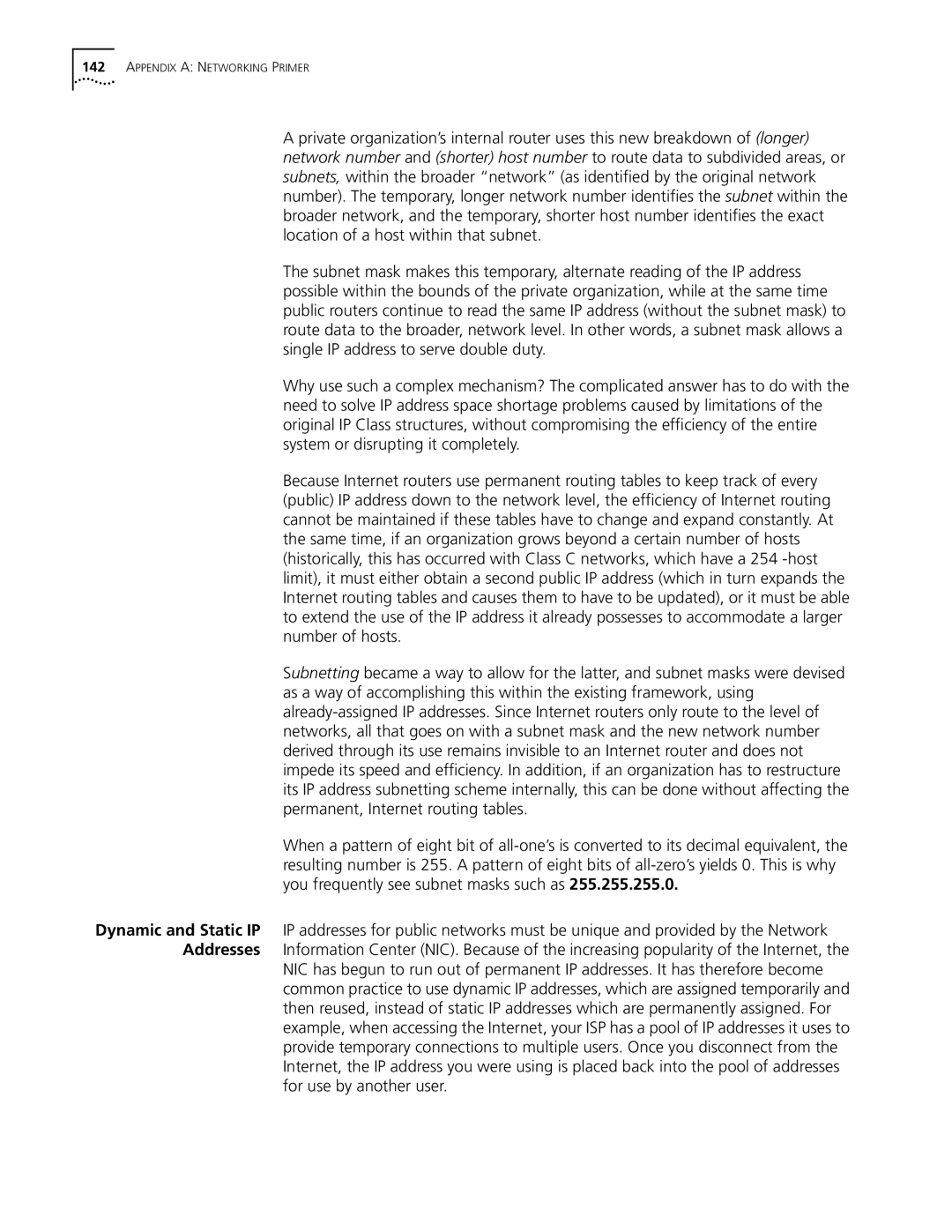142APPENDIX A: NETWORKING PRIMER
A private organization’s internal router uses this new breakdown of (longer) network number and (shorter) host number to route data to subdivided areas, or subnets, within the broader “network” (as identified by the original network number). The temporary, longer network number identifies the subnet within the broader network, and the temporary, shorter host number identifies the exact location of a host within that subnet.
The subnet mask makes this temporary, alternate reading of the IP address possible within the bounds of the private organization, while at the same time public routers continue to read the same IP address (without the subnet mask) to route data to the broader, network level. In other words, a subnet mask allows a single IP address to serve double duty.
Why use such a complex mechanism? The complicated answer has to do with the need to solve IP address space shortage problems caused by limitations of the original IP Class structures, without compromising the efficiency of the entire system or disrupting it completely.
Because Internet routers use permanent routing tables to keep track of every (public) IP address down to the network level, the efficiency of Internet routing cannot be maintained if these tables have to change and expand constantly. At the same time, if an organization grows beyond a certain number of hosts (historically, this has occurred with Class C networks, which have a 254
Subnetting became a way to allow for the latter, and subnet masks were devised as a way of accomplishing this within the existing framework, using
When a pattern of eight bit of
Dynamic and Static IP IP addresses for public networks must be unique and provided by the Network Addresses Information Center (NIC). Because of the increasing popularity of the Internet, the
NIC has begun to run out of permanent IP addresses. It has therefore become common practice to use dynamic IP addresses, which are assigned temporarily and then reused, instead of static IP addresses which are permanently assigned. For example, when accessing the Internet, your ISP has a pool of IP addresses it uses to provide temporary connections to multiple users. Once you disconnect from the Internet, the IP address you were using is placed back into the pool of addresses for use by another user.
